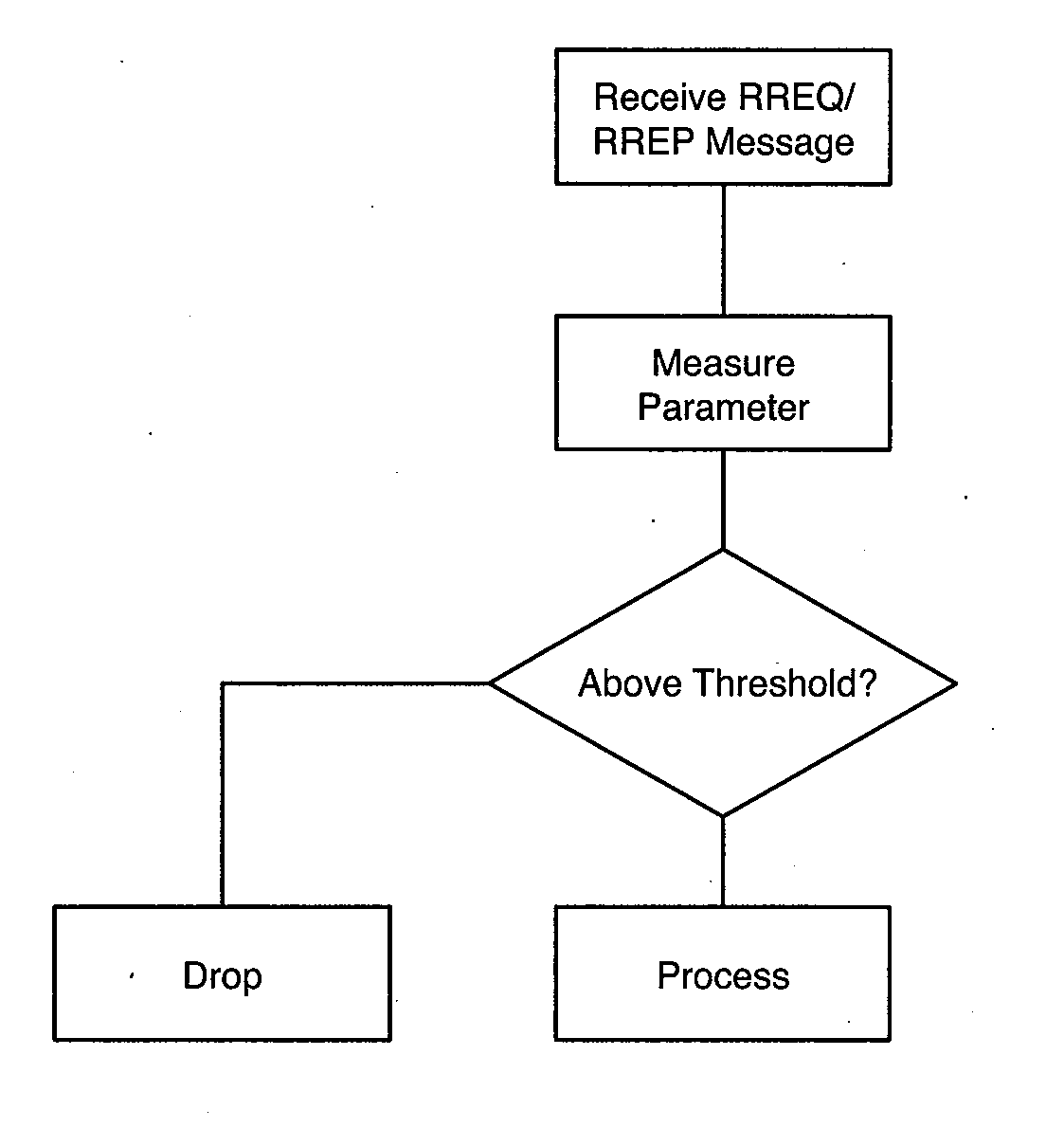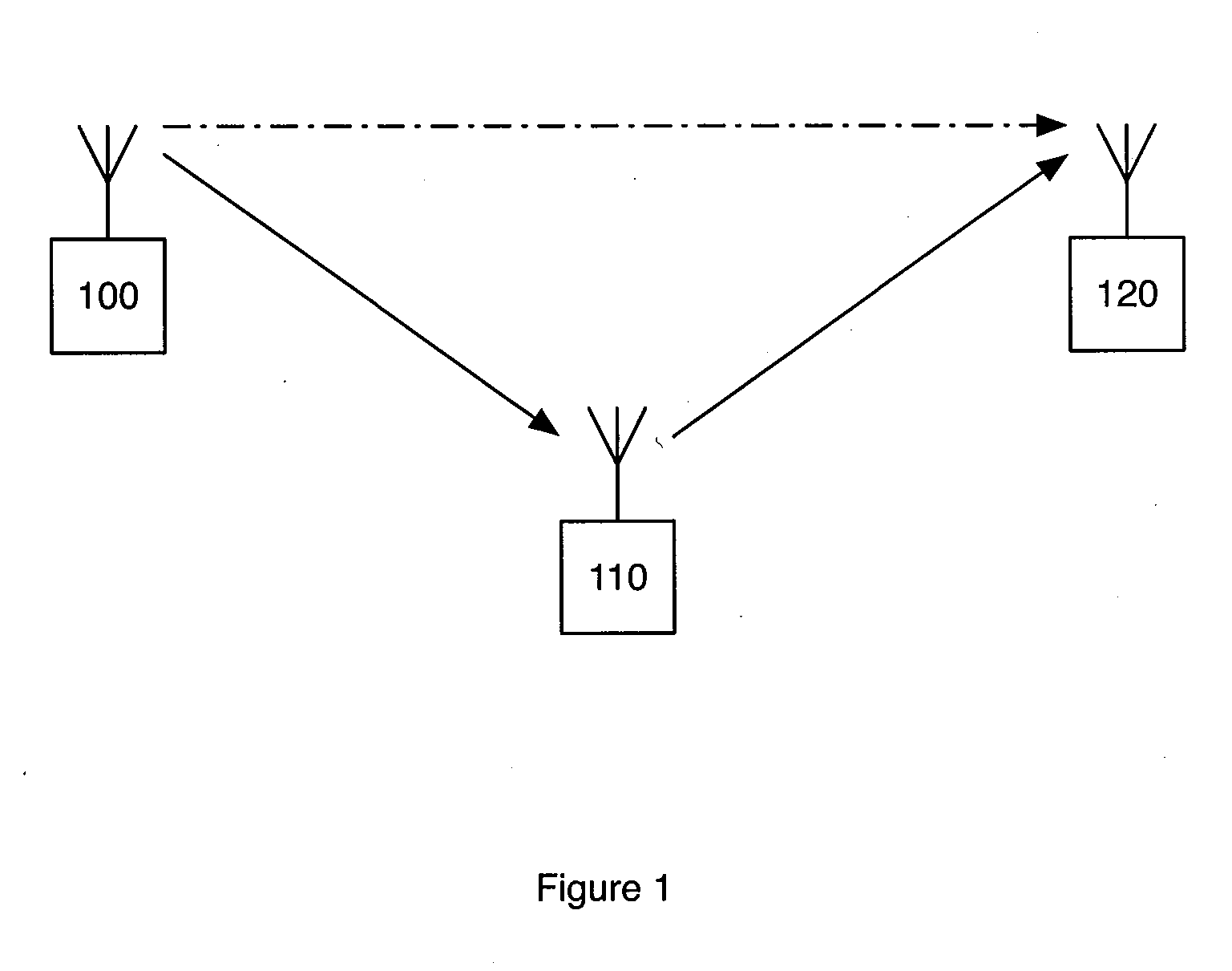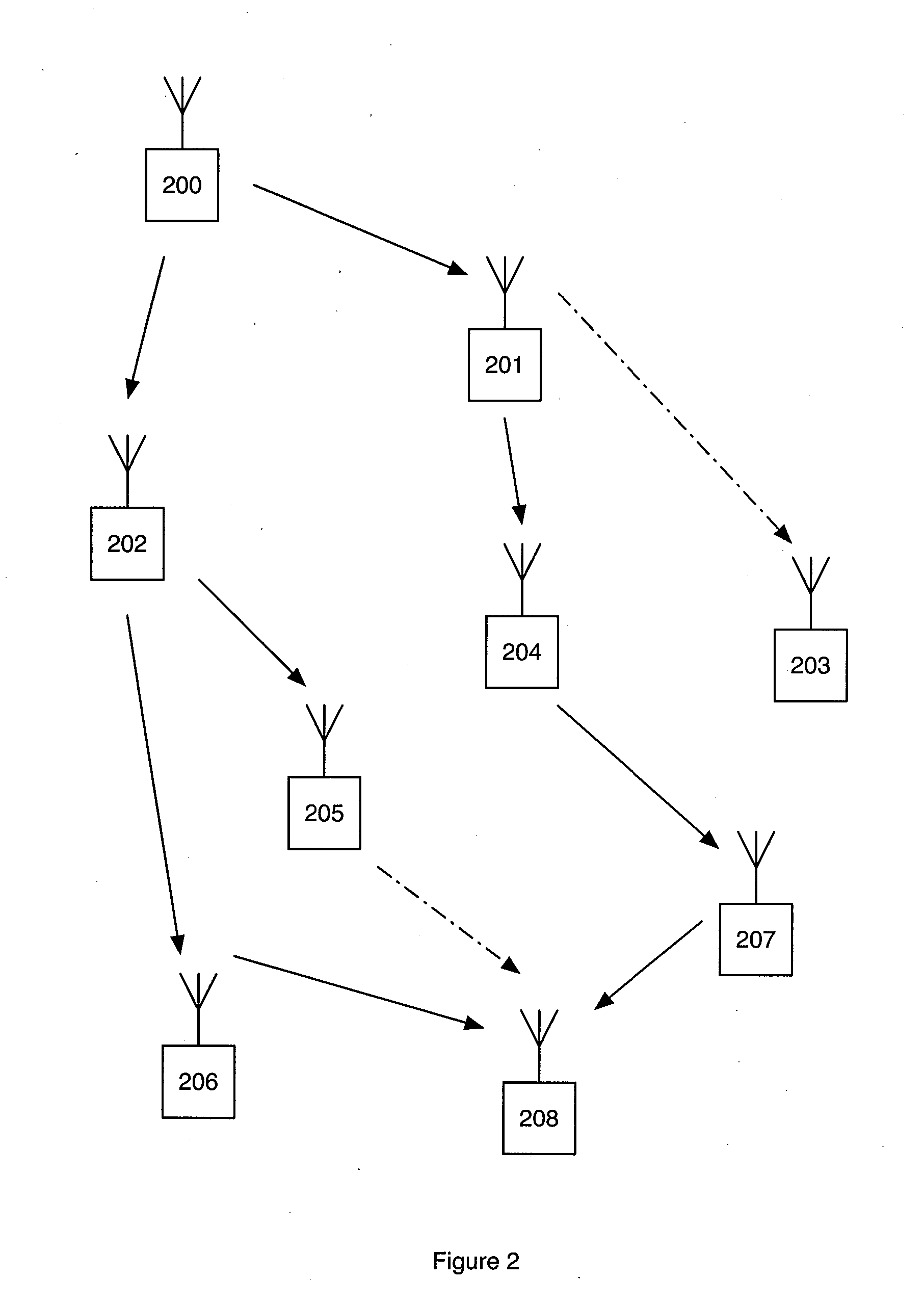Link sensitive aodv for wireless data transfer
a wireless data transfer and sensitive technology, applied in transmission, transmission systems, network topologies, etc., can solve the problems of packet drop, poor signal measurement precision, degrade network performance, etc., and achieve improved link stability and network quality, improve signal quality, and improve signal quality
- Summary
- Abstract
- Description
- Claims
- Application Information
AI Technical Summary
Benefits of technology
Problems solved by technology
Method used
Image
Examples
Embodiment Construction
FIG. 1 shows the simple 3-node case where node 100 is discovering a route to node 120. The solid arrows represent a strong radio link, and the dotted arrow represents a weak radio link. In this case, an RREP would be transmitted from 120 back to 100, resulting in a poor radio link for data communication.
FIG. 2 shows a more complete mesh with two poor links: one in the middle of a path from 200 to 208, and another poor link to the destination node, 208, from an intermediate node, 205. Node 200 is attempting to find a path to node 208.
In order to compensate for poor links in AODV networks, when receiving an RREQ message, each node compares the signal quality of the incoming message to a stored threshold value. If the signal quality does not meet or exceed the threshold value, the node drops the RREQ without responding or forwarding the packet. This way, weak links are not used for any data transmission, and stronger, multi-hop links are enforced.
Any combination of input SNR (signal-to...
PUM
 Login to View More
Login to View More Abstract
Description
Claims
Application Information
 Login to View More
Login to View More - R&D
- Intellectual Property
- Life Sciences
- Materials
- Tech Scout
- Unparalleled Data Quality
- Higher Quality Content
- 60% Fewer Hallucinations
Browse by: Latest US Patents, China's latest patents, Technical Efficacy Thesaurus, Application Domain, Technology Topic, Popular Technical Reports.
© 2025 PatSnap. All rights reserved.Legal|Privacy policy|Modern Slavery Act Transparency Statement|Sitemap|About US| Contact US: help@patsnap.com



